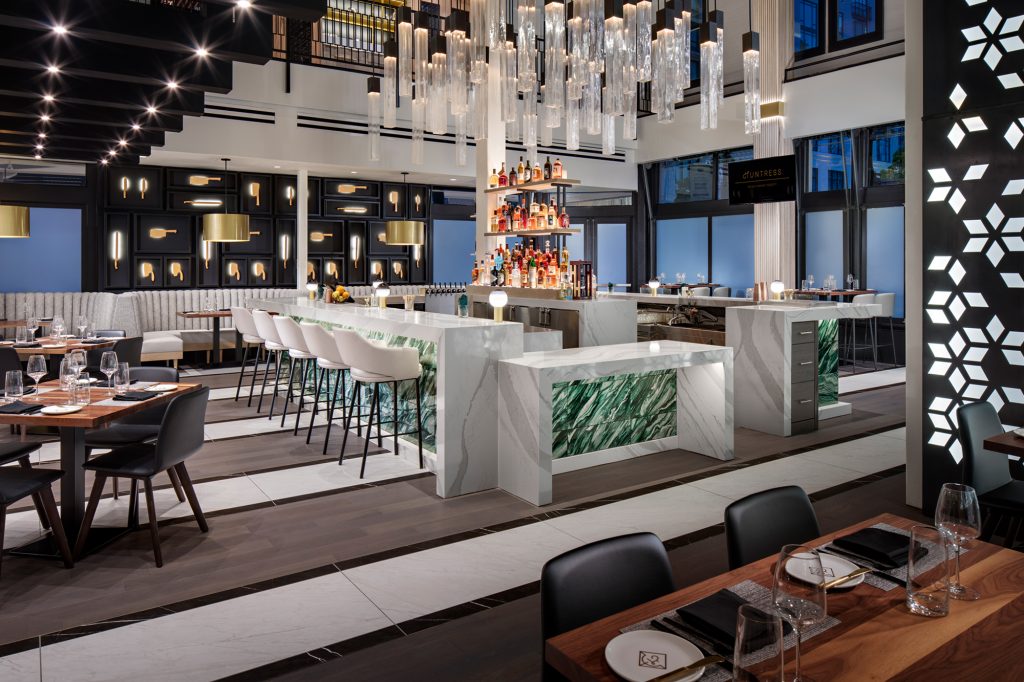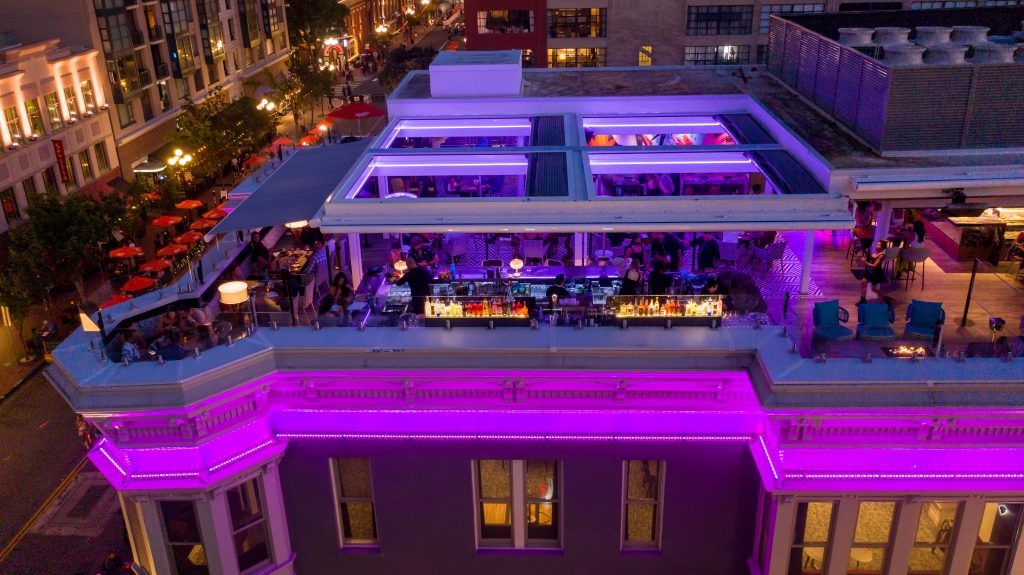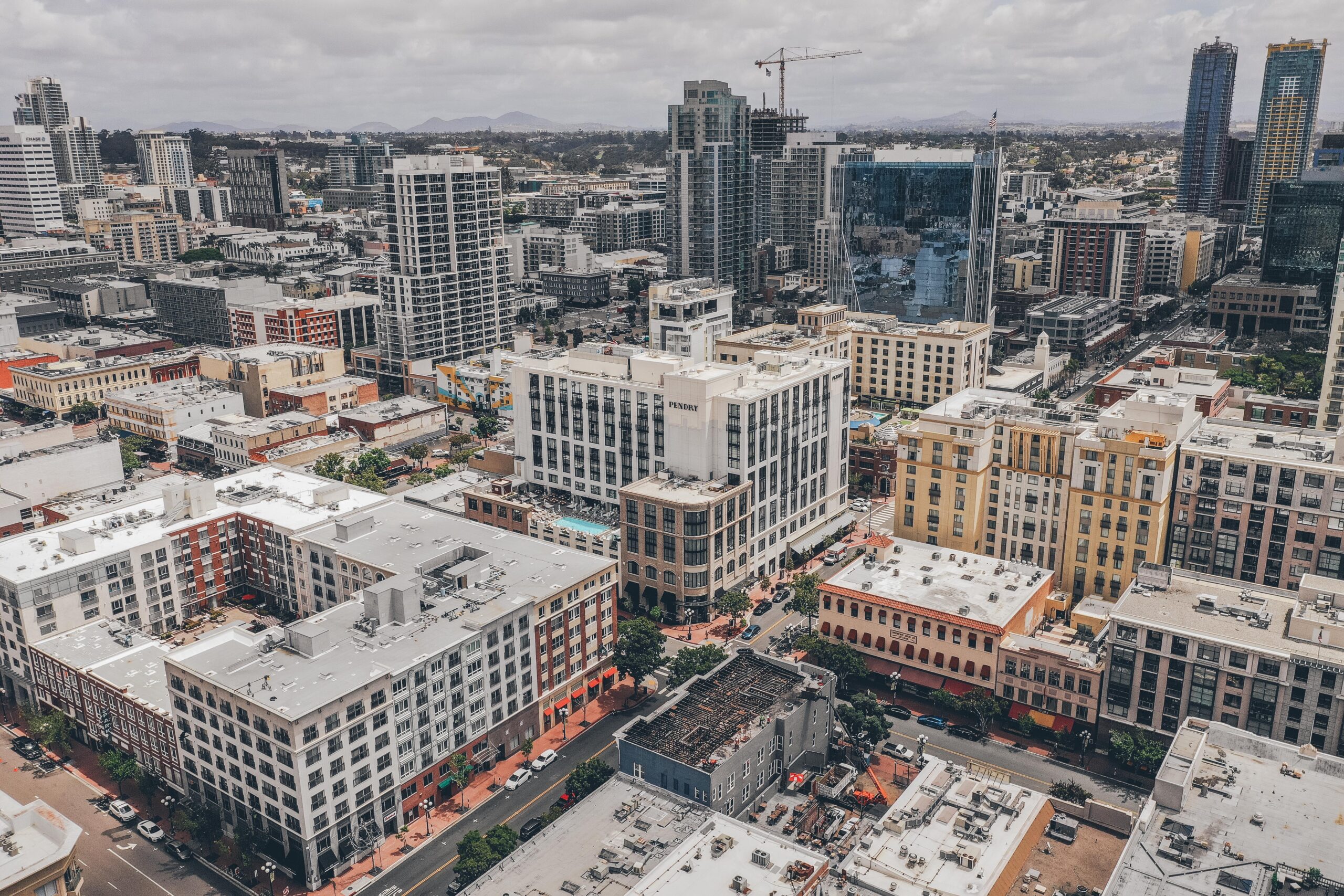Location is Everything: Strategically Choose the Best Location for Your Restaurant
Gain valuable insights and expert tips on finding the perfect location for your restaurant business with Michael Georgopoulos, co-founder of RMD Group and Chairman of the Gaslamp Quarter Association. With over two decades of experience in the industry, Mike has overseen and delivered a multitude of successful hospitality projects in San Diego.
In this exclusive article, we tap into his location analysis expertise to help you find the perfect property for your restaurant or hospitality business—from understanding your buildout budget and the ideal size of your space to evaluating zoning laws and the competition in the area.
Evaluating Rent: Finding the Right Balance for Your Budget
Before restaurant owners and operators start the search for the perfect location, Mike Georgopoulos, emphasizes the significance of evaluating rent in relation to your budget and your projected sales.
“Rent is a major factor in your overall expenses, and it’s essential to calculate an affordable amount based on your projected sales,” explains Mike. “Some spaces will cost too much to convert into a restaurant or bar and won’t have a logical return on investment.”

“To maintain a healthy financial balance, aim for rent to be around 6%-10% of your budget. Keep in mind that a lower rent venue in a less prominent location may require additional marketing investments, while a higher rent venue in a more visible location can potentially save you money on marketing costs.”
A good starting point is to identify the average rent for comparable spaces in the area you’re considering. Make sure you’re not overpaying for a location that might not generate enough revenue to cover your costs.
You should also factor in any additional costs that may come with your lease. For example, you may be responsible for property taxes, maintenance fees, or utilities. These expenses add up quickly and can have a significant impact on your monthly budget.
Determining rent expenses is, however, just one piece of the puzzle. There are several other factors to take into account during the location analysis process. These factors include evaluating the build-out budget, determining the required size and seating capacity, and understanding the impact of local zoning laws and regulations. We’ll explore these factors in the following sections.
Determining Your Buildout Budget: A Crucial First Step
Perhaps the most important first step in the location analysis process is determining your buildout budget. Doing so will help identify potential locations that align with your financial resources, and, ultimately, save you time in the search.
To determine your buildout budget, consider the costs of everything from construction and permits to equipment and furniture. Be realistic and factor some breathing room into your budget to account for any unexpected expenses that may arise during the buildout process.
Once you have a clear idea of your budget, you can start to evaluate locations that align with your financial resources. This will help you narrow down your search and focus on areas that are financially feasible.
In addition to budget, you also need to consider the size and seating capacity you require, as well as zoning laws and regulations.
The Financial Advantages of Being a Destination Restaurant
Before making any decisions about location, assess if your restaurant concept has the potential to be a destination restaurant.
Mike explains:
“Being a destination restaurant means that people are willing to go out of their way to visit your establishment, even if it’s not in a prime location. This opens up more possibilities for finding the right space that meets your needs without breaking the bank on rent.”
Of course, this won’t apply to all concepts and that’s totally fine! It takes a unique and enticing concept to make people willing to travel out of their way to dine there. But, if your concept is strong enough to be a destination restaurant, you have the advantage of being able to stray from the typical high traffic/high cost areas, saving money on rent and securing a more unique space.
Evaluating Size and Seating Capacity: Maximizing Profitability
Next, evaluate the size and seating capacity required for the restaurant. Mike recommends dedicating 40-50% of the space to the back of the house and allocating 12-15 square feet per customer for a full-service dining room.

Understanding your concept’s expected customer volume plays a role in determining the appropriate seating capacity and helps maximize profitability.
Overestimating can lead to unnecessarily large spaces that may be difficult to fill, resulting in lower profits and longer break-even periods due to higher operational costs such as rent and utilities.
Underestimating, on the other hand, can lead to not having enough seats for customers during peak hours, which results in lost revenue.
Ask yourself:
- How many seats will you need to accommodate your customers?
- What is your budget for leasehold improvements and ongoing operations?
- Will there be a bar or patio, and how will they factor into the space requirements?
Mike emphasizes the importance of detailed projections and knowing what you can afford to help define your property search parameters.
Zoning Laws and Regulations: Navigating Legal Considerations
In addition to space considerations, zoning laws and regulations will also need to be considered. Mike notes, “ABC closing times, entertainment restrictions, and exterior building design requirements change from district to district. Be sure these restrictions align with your concept. Don’t assume that just because another venue in the area is doing something, that it is legally permissible.”
You need to research the zoning laws in your area and make sure that the location you’re interested in is actually zoned for a restaurant.
ABC laws regulate the sale and consumption of alcohol, and are typically enforced by the state. If you plan to serve alcohol, you will need to obtain a liquor license from the ABC.
It’s worth pointing out that zoning laws and ABC laws may restrict the hours of operation for restaurants, so it’s best to be informed before you make any decisions or commit to a location.
The most efficient approach to this research is starting with the governing body at the lowest level and progressing upward because the regulations at this level will be the most pertinent and will have the greatest impact on your business.
For example, if your restaurant will be located within a city, the city’s zoning regulations will take precedence over those of the county. However, you’ll still need to comply with all necessary licenses and permits at all levels of government.
Choosing the Right Location: Analyzing Demand and Identifying Complementary Businesses
Analyzing the demand for your concept in the area as well as recognizing complementary versus competitive restaurants in the vicinity should also be explored during your location analysis. Choosing the right location is a vital aspect of launching a successful restaurant, so don’t rush this step!

Assessing Market Fit: Understanding the Demand for Your Concept
You don’t want to open a restaurant where there is little demand for the type of cuisine you’re offering or where the market is already oversaturated with similar restaurants. To understand the need for your concept in the area, research the local community and identify its needs.
Mike advises, “Look at the demographics of the area, foot traffic, and nearby businesses. You want to make sure you’re in a location where there’s demand for your concept.”
Is there a particular cuisine or dining experience that is missing in the local market?
Is there a gap in the market that your concept can fill?
Analyze the area’s potential customer base and their dining preferences to ensure that your concept will resonate with them.
Complementary vs Competitive Restaurants: Creating Synergy for Success
At this point, it’s good to take note of whether the other restaurants in the area complement or compete with your concept.
Mike explains, “You want to be in a location with complementary businesses, not direct competitors. Being near complementary businesses creates a synergy that helps drive foot traffic to your establishment.”
For example, if your concept is a fine-dining restaurant, consider a location near a popular theater or music venue. This can attract patrons looking for a complete dining experience before or after the show.
On the other hand, if there are already several similar restaurants in the area, it may be challenging to stand out among the competition and attract customers.
Use the following three methods to help identify the complementary vs competitive nature of an area:
1. Conduct a competitive analysis
First, identify restaurants in the area that could be considered competitors to your concept. Analyze their menus, pricing, branding, and marketing strategies in order to understand what you’re up against and determine how you can differentiate yourself from the competition.
2. Identify complementary businesses
Research what other types of restaurants and businesses are in the area and whether they complement or compete with your concept.
3. Consider the foot traffic
Evaluate how much foot traffic the area receives and whether there are any nearby attractions or events that could draw people to the area.
Ultimately, choosing the right location for your restaurant is a balancing act between finding a space that fits within your budget while also meeting the needs of your concept and the community.
Running the Numbers and Making the Final Decision
While there is no one-size-fits-all answer, by conducting thorough research you’ll be able to run the numbers in advance and assess the financial feasibility and market potential of each location.
Remember, it’s not just about finding a space; it’s about finding the right space that aligns with your concept and target audience. Mike advises, “Don’t get too attached to any one property. Keep your options open, and be prepared to walk away if a deal doesn’t make sense financially.”
If you need expert guidance and consulting services to navigate this process successfully, don’t hesitate to contact RMD Group. Our experienced team can provide valuable insights and support to help you make informed decisions and maximize the potential of your restaurant or hospitality business.
Take the next step towards your restaurant’s success and reach out to RMD Group today.


